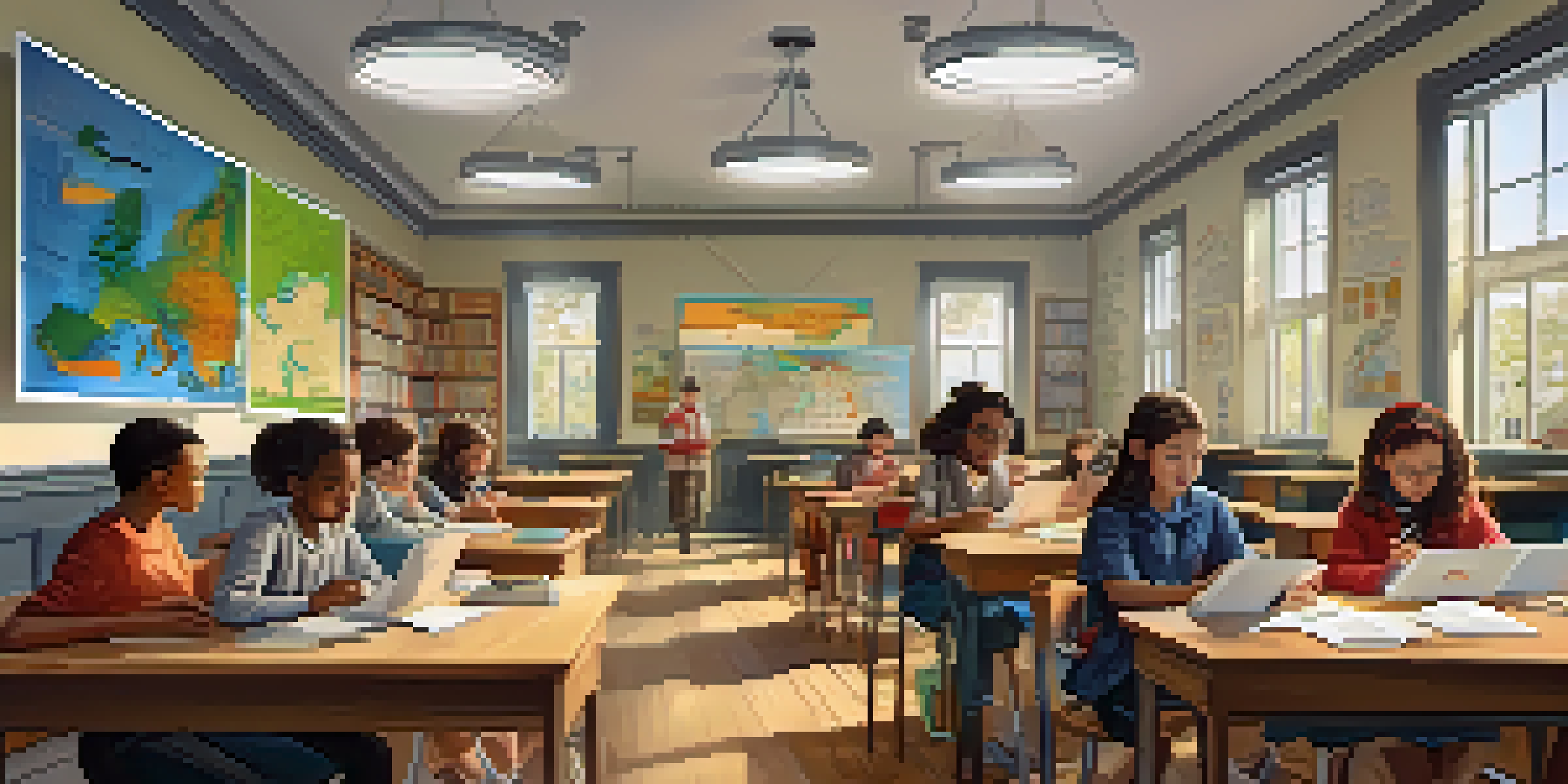The Transformation of Learning Experiences Through Mobile Tech

The Rise of Mobile Learning: A New Era in Education
Mobile learning, or m-learning, has emerged as a powerful force in education. With smartphones and tablets in almost every pocket, the way we access information has drastically changed. Students can now learn anytime and anywhere, making education more flexible and accessible than ever before.
Education is not the filling of a pail, but the lighting of a fire.
This shift is not just about convenience; it’s about empowerment. Mobile devices give learners the tools to take control of their education, allowing them to explore topics that interest them at their own pace. For example, a student struggling with math can access countless apps and videos tailored to their specific needs right from their phone.
Moreover, m-learning fosters a more personalized approach to education. By utilizing adaptive learning technologies, educators can create customized experiences that resonate with individual students, thereby enhancing engagement and retention.
Transforming Traditional Classrooms with Mobile Tech
Mobile technology is revolutionizing traditional classrooms by integrating interactive elements. Teachers are now able to incorporate multimedia presentations, quizzes, and real-time feedback into their lessons. This interactivity not only keeps students engaged but also caters to various learning styles.

For instance, imagine a history lesson where students can explore 3D models of ancient civilizations on their tablets. This hands-on experience makes the subject come alive, helping students to better understand complex concepts. Furthermore, it encourages collaboration among peers, as they can share insights and resources instantly.
Mobile Learning Empowers Students
Mobile devices allow learners to take control of their education, accessing tailored resources anytime and anywhere.
In this way, mobile tech is bridging the gap between theoretical knowledge and practical application, making learning more relevant and exciting for students.
Enhancing Accessibility with Mobile Learning Solutions
One of the most significant advantages of mobile technology in education is its ability to enhance accessibility. Students with disabilities, for example, can benefit tremendously from mobile apps designed specifically for their needs. Features like voice recognition and text-to-speech make learning materials more accessible to everyone.
The great aim of education is not knowledge but action.
Consider a visually impaired student using a mobile app that reads textbook content aloud. This technology not only helps them keep up with their peers but also promotes inclusivity within the classroom. Educators can leverage these tools to ensure that all students, regardless of their challenges, have equal learning opportunities.
As mobile learning continues to evolve, the potential for improving accessibility becomes even greater, paving the way for a more equitable education system.
The Role of Gamification in Mobile Learning Experiences
Gamification is another exciting trend in mobile learning that enhances student engagement. By integrating game-like elements such as points, badges, and leaderboards, educators can motivate students to participate actively in their learning journeys. This approach transforms studying from a chore into a fun and rewarding experience.
For example, language learning apps often use gamification to encourage daily practice. Users earn rewards for completing lessons, which not only boosts their motivation but also helps them retain information better. This playful competition fosters a sense of accomplishment and encourages continuous improvement.
Gamification Boosts Engagement
Incorporating game-like elements into learning makes education more fun and encourages active participation.
Ultimately, gamification makes learning feel less intimidating and more enjoyable, helping students develop a positive attitude towards education.
The Power of Collaboration Through Mobile Technology
Mobile technology has made collaboration among students easier and more effective. With tools like messaging apps, video calls, and collaborative document editors, learners can work together on projects regardless of their location. This connectivity fosters teamwork and enhances communication skills, which are essential for future success.
Imagine a group of students from different schools collaborating on a science project via video conference. They can share ideas, gather feedback, and create presentations in real time. This experience not only enriches their understanding of the subject matter but also teaches them valuable skills in teamwork and problem-solving.
As mobile tech continues to advance, the potential for collaborative learning grows, preparing students for a globalized workforce.
Real-Time Feedback: The Key to Effective Learning
Mobile technology provides opportunities for real-time feedback, which is crucial for effective learning. Educators can use various apps and platforms to assess student understanding instantly, enabling them to adjust their teaching methods on the fly. This immediacy helps identify areas where students may struggle and allows for timely intervention.
For instance, a teacher might use a polling app during a lesson to gauge student comprehension. If a significant number of students answer incorrectly, they can revisit the topic right away. This approach not only enhances learning outcomes but also creates a more responsive and adaptive classroom environment.
Collaboration is Enhanced by Tech
Mobile technology facilitates teamwork and communication among students, preparing them for a globalized workforce.
Ultimately, real-time feedback empowers both educators and students, fostering a culture of continuous improvement and growth.
Challenges of Mobile Learning and How to Overcome Them
Despite the numerous advantages of mobile learning, there are challenges that educators and students face. Issues such as digital distractions, unequal access to technology, and varying levels of digital literacy can hinder the effectiveness of mobile learning experiences. Addressing these challenges is crucial for maximizing the benefits of m-learning.
For instance, schools can implement guidelines to minimize distractions during lessons. Additionally, providing training and resources can help students and teachers develop the necessary digital skills to navigate mobile technology effectively. Furthermore, initiatives that offer devices to underprivileged students can bridge the technology gap.

By acknowledging and addressing these challenges, we can create an inclusive and effective mobile learning environment that benefits all students.